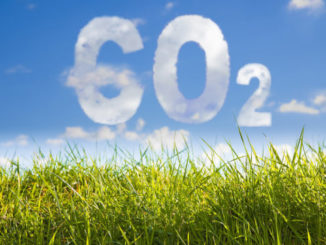
Date: May 29, 2018
Source: University of Exeter
Summary: An invisible layer of biological compounds on the sea surface reduces the rate at which carbon dioxide gas moves between the atmosphere and the oceans, scientists have reported.
An invisible layer of biological compounds on the sea surface reduces the rate at which carbon dioxide gas moves between the atmosphere and the oceans, scientists have reported.
Scientists from Exeter, Heriot-Watt and Newcastle universities published their research in the journal Nature Geoscience today, and say the findings have major implications for predicting our future climate.
The world’s oceans currently absorb around a quarter of all anthropogenic carbon dioxide emissions, making them the largest long-term sink of carbon on Earth.
Atmosphere-ocean gas exchange is controlled by turbulence at the sea surface, the main cause of which is waves generated by wind. Greater turbulence means increased gas exchange and, until now, it was difficult to calculate the effect of biological surfactants on this exchange.
The Natural Environment Research Council (NERC), Leverhulme Trust and European Space Agency funded team developed a novel experimental system that directly compares “the surfactant effect” between different sea waters collected along oceanographic cruises, in real time.
Using this and satellite observations the team then found that surfactants can reduce carbon dioxide exchange by up to 50 percent.
Dr Ryan Pereira, a Lyell Research Fellow at Heriot-Watt University in Edinburgh, said: “As surface temperatures rise, so too do surfactants, which is why this is such a critical finding. The warmer the ocean surface gets, the more surfactants we can expect, and an even greater reduction in gas exchange.
“What we discovered at 13 sites across the Atlantic Ocean is that biological surfactants suppress the rate of gas exchange caused by the wind. We made unique measurements of gas transfer using a purpose-built tank that could measure the relative exchange of gases impacted only by surfactants present at these sites.
“These natural surfactants aren’t necessarily visible like an oil slick, or a foam, and they are even difficult to identify from the satellites monitoring our ocean’s surface.
“We need to be able to measure and identify the organic matter on the surface microlayer of the ocean so that we can reliably estimate rates of gas exchange of climate active gases, such as carbon dioxide and methane.”
Professor Rob Upstill-Goddard, professor of marine biogeochemistry at Newcastle University, said: “These latest results build on our previous findings that, contrary to conventional wisdom, large sea surface enrichments of natural surfactants counter the effects of high winds.
“The suppression of carbon dioxide uptake across the ocean basin due to surfactants, as revealed by our work, implies slower removal of anthropogenic carbon dioxide from the atmosphere and thus has implications for predicting future global climate.”
The University of Exeter team, Drs Jamie Shutler (Geography) and Ian Ashton (Renewable Energy) led the satellite component of the work.
Dr Ashton said: “Combining this new research with a wealth of satellite data available allows us to consider the effect of surfactants on gas exchange across the entire Atlantic Ocean, helping us to monitor carbon dioxide on a global scale.”
The team collected samples across the Atlantic Ocean in 2014, during a NERC study on the Atlantic Meridional Transect (AMT). Each year the AMT cruise undertakes biological, chemical and physical oceanographic research between the UK and the Falkland Islands, South Africa or Chile, a distance of up to 13,500km, to study the health and function of our oceans.
The research cruise crosses a range of ecosystems from sub-polar to tropical and from coastal and shelf seas and upwelling systems to oligotrophic mid-ocean gyres.
Source: https://www.sciencedaily.com/releases/2018/05/180529132041.htm
Visits: 46




Be the first to comment